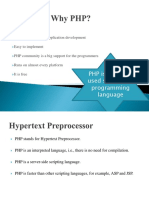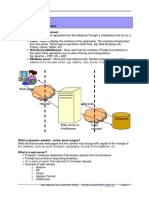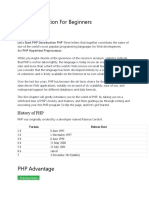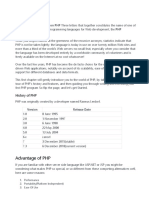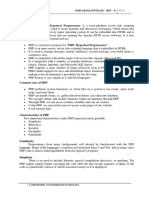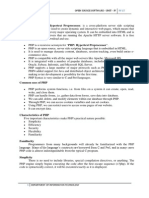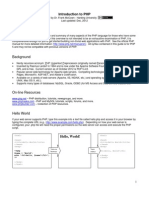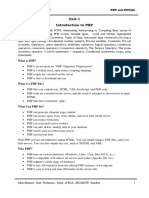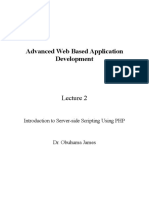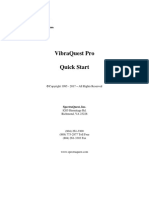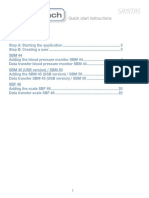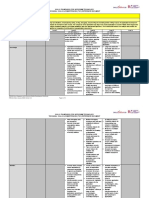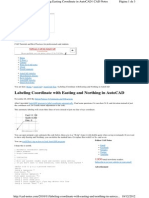0% found this document useful (0 votes)
181 views18 pagesPixels Infotech: PHP Material
The document provides an overview of PHP (Hypertext Preprocessor), which is a scripting language commonly used for web development. PHP can be used for command line scripts, desktop applications, and web applications. It is an open source language that is widely used with databases like MySQL and web servers like Apache. The document discusses installing and configuring PHP with a web server like IIS or XAMPP, which bundles PHP with Apache, MySQL and other tools. It also covers creating PHP projects using an IDE like NetBeans and basic PHP syntax like comments, echo/print statements, and PHP blocks.
Uploaded by
malliknakkaCopyright
© Attribution Non-Commercial (BY-NC)
We take content rights seriously. If you suspect this is your content, claim it here.
Available Formats
Download as DOC, PDF, TXT or read online on Scribd
0% found this document useful (0 votes)
181 views18 pagesPixels Infotech: PHP Material
The document provides an overview of PHP (Hypertext Preprocessor), which is a scripting language commonly used for web development. PHP can be used for command line scripts, desktop applications, and web applications. It is an open source language that is widely used with databases like MySQL and web servers like Apache. The document discusses installing and configuring PHP with a web server like IIS or XAMPP, which bundles PHP with Apache, MySQL and other tools. It also covers creating PHP projects using an IDE like NetBeans and basic PHP syntax like comments, echo/print statements, and PHP blocks.
Uploaded by
malliknakkaCopyright
© Attribution Non-Commercial (BY-NC)
We take content rights seriously. If you suspect this is your content, claim it here.
Available Formats
Download as DOC, PDF, TXT or read online on Scribd
/ 18







